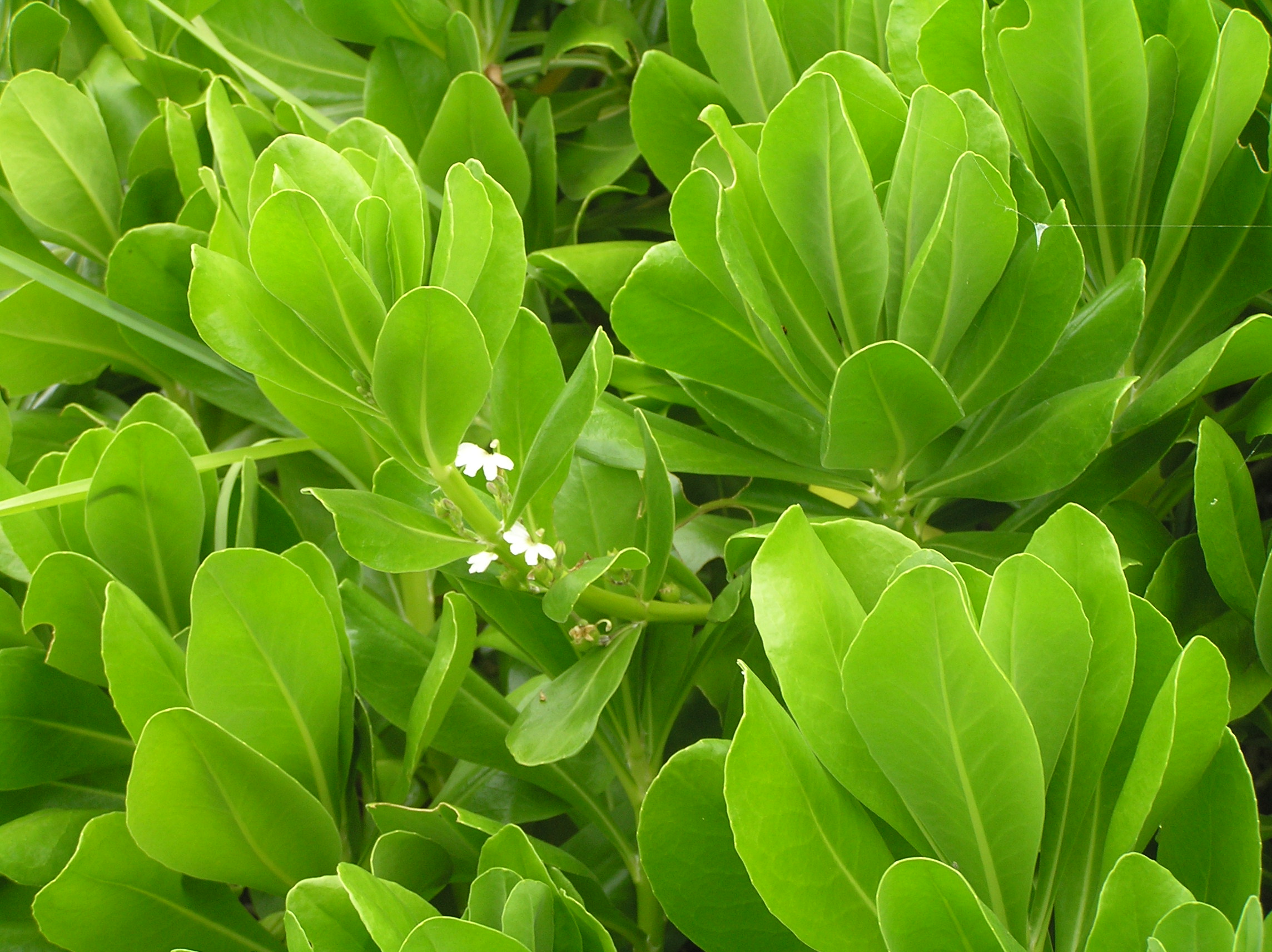Scaevola taccada


Common Name: beach naupaka
Family: Goodeniaceae
Common Synonyms: Scaevola frutescens, Scaevola koenigii, Scaevola sericea
USDA Hardiness Zone: 10a-11
Growth Habit: Shrub
Origin: Southeastern Asia, eastern Africa, Australia, and the Pacific Islands, including Hawaii
FISC Category: 1
FDACS Listed Noxious Weed: Yes
Introduction Date: At least the 1960's
IFAS Assessment:

"Leaves: Blades 4-21 cm (1.5-8.25 in.) long, 1.8-9 cm (0.7-1.5 in.) wide, appearing elliptic to spoon-shaped with broad tip often having shallow indentations, leaf edges sometimes curved downward; somewhat succulent, but not stiff or thick-skinned. There are two varieties of beach naupaka. The common S. taccada var. sericea has silky plant hairs on the stem and leaves, and the less common S. taccada var. taccada, appears to be smooth, lacking plant hairs. Flowers: Dense axillary clusters emerge in groups of three, all flowers stalked. Five white, sometimes pinkish violet, petals (about 2 cm long) extend halfway around the flower, like a semi-circle, resulting in the name ""half-flower"". Fruits: Round to elliptical single-seeded fruit (drupe) measuring about 1.0-1.7 cm (0.4-0.66 in.) with white to yellowish-white skin. Plants can produce fruits within their first or second year. "
Beach dunes, coastal rock barrens, coastal strands, mangrove forests, coastal hammocks, coastal landscapes
Occasionally mislabeled as the native inkberry by plant nurseries

Monitoring and re-treatment are necessary for at least two to three years.
IFAS, Center for Aquatic and Invasive Plants. 2022. Scaevola taccada. https://plants.ifas.ufl.edu/plant-directory/scaevola-taccada/ Accessed August 10, 2022
IFAS, UF. 2022. Assessment of Non-Native Plants in Florida's Natural Areas. Scaevola taccada var sericea. https://assessment.ifas.ufl.edu/assessments/scaevola-taccada-var-sericea/. Accessed August 10, 2022.
Dave's Garden. 2022. Scaevola Species, Beach Naupaka, Beach Fan-flower, Hawaiian Half-flower, Sea Lettuce. https://davesgarden.com/guides/pf/go/59171/ Accessed August 10, 2022.